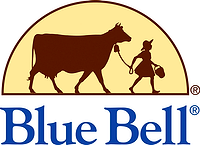On April 20, 2015, Blue Bell Creameries voluntarily recalled all of its products currently on the market made at all of its facilities, including ice cream, frozen yogurt, sherbet, and frozen snacks, because they have the potential to be contaminated with Listeria monocytogenes. The number of those affected stands at 10, with 3 deaths. This complex and ongoing multistate outbreak investigation of listeriosis illnesses has been occurring since 2010. Several strains of L. monocytogenes appear to be involved in this outbreak and that various Blue Bell brand products are the source of this outbreak.
Food Safety Magazine (FSM) sat down with Dr. Lynne McLandsborough, Ph.D., associate professor of food science at the University of Massachusetts, to discuss the Blue Bell ice cream recall and the dangers that Listeria poses to the public.
When asked what it was specifically about ice cream that makes it vulnerable to contamination by Listeria, she noted that all processed foods are susceptible, and with Listeria extremely common in the processing environment, most instances of contamination are post-processing. Possible sources could be from air handling (lacking proper HEPA filtration), filler condensation dripping onto product, improper pasteurization or contaminated ingredients that don’t receive a proper kill step prior to addition to the ice cream matrix.
While Listeria won’t grow in the frozen products produced by Blue Bell, Dr. McLandsborough mentioned that the organism is quite tolerant of a wide range of temperatures. “We like to call it a psychrotropic mesophile. Its optimal growth temperature is 35 °C, but it can slowly grow at refrigeration temperatures, making it a potential contaminant of dairy and other refrigerated, ready-to-eat foods.”
Listeriosis is caused by eating food contaminated with L. monocytogenes. It can be life-threatening in adults 65 and older, people with compromised immune systems and pregnant women, often causing meningitis and, in the case of pregnancy, stillbirth or spontaneous abortion. There is no indication that it causes high mortality in healthy children or adults.
The incubation period for listeriosis can be quite long, making the tracking of an outbreak extremely difficult. In the current outbreak, a cluster of illnesses were in individuals hospitalized at the same hospital for unrelated problems before developing invasive listeriosis—a finding that strongly suggested that their infections were acquired in the hospital. This connection was confirmed in that four of these affected individuals consumed milkshakes made with a single-serving Blue Bell brand ice cream product called “Scoops” while they were in the hospital. Isolates from these patients were highly related by whole-genome sequencing.
While product sampling and testing, as well as frequent cleaning and sanitation and a robust environmental monitoring program can help safeguard against Listeria contamination of food products, the widespread distribution of Listeria in the environment makes it a food processing challenge.
While U.S. Food and Drug Administration (FDA) has draft guidance on “Control of Listeria monocytogenes In Refrigerated or Frozen Ready-To-Eat Foods” from 2008, it is clear that more than mere recommendations are needed for such products regulated by FDA. “U.S. Department of Agriculture added a regulation in 2004 that mandated the addition of an antimicrobial and/or a subsequent treatment for all ready-to-eat deli meats, or implementation of frequent environmental testing. This approach has been quite effective,” McLandsborough noted. Proof that it is possible to control Listeria in processed foods.
Listeria in Ice Cream: Expert Analysis




